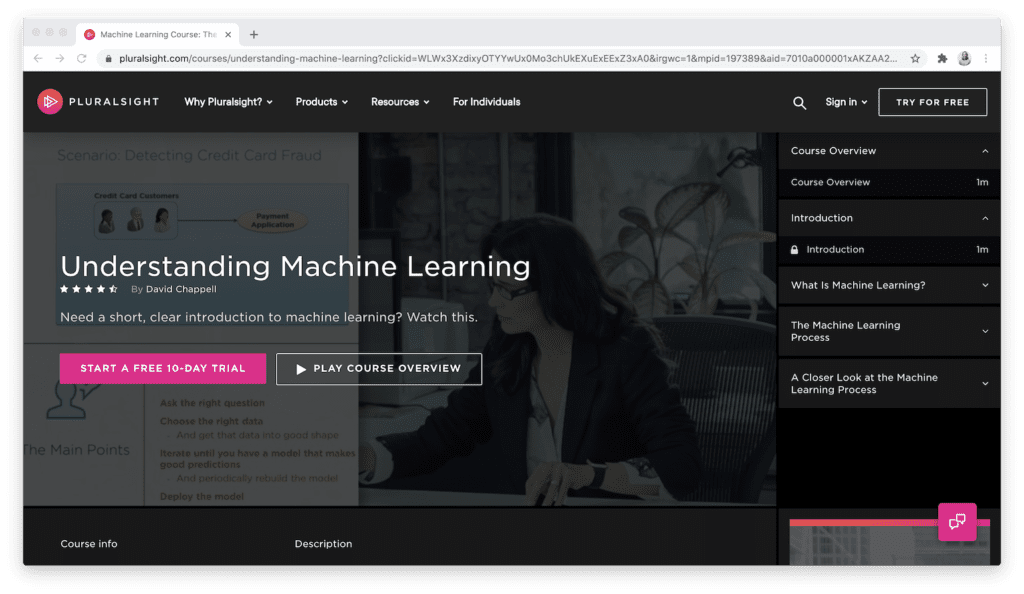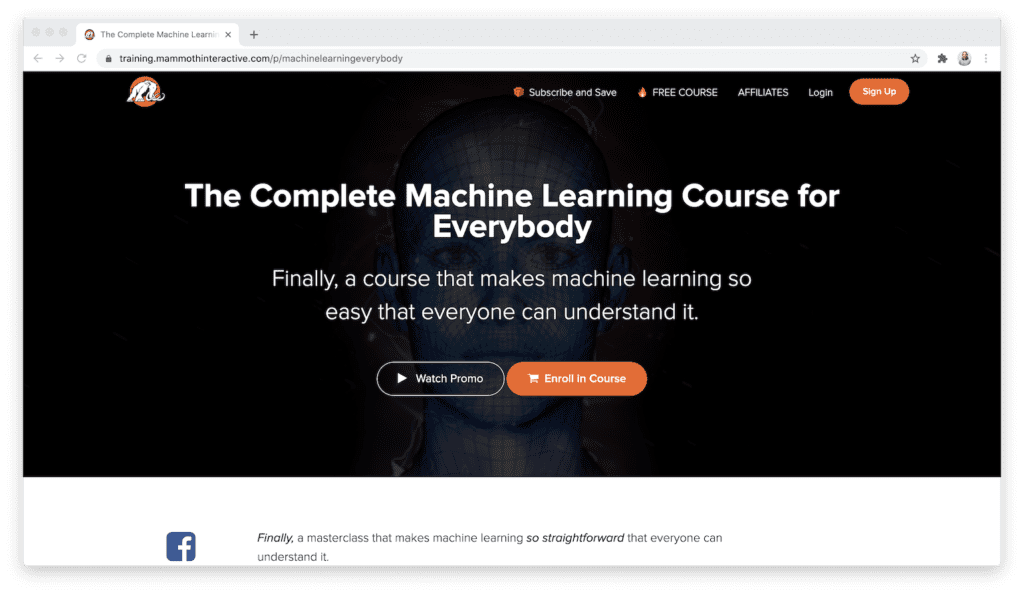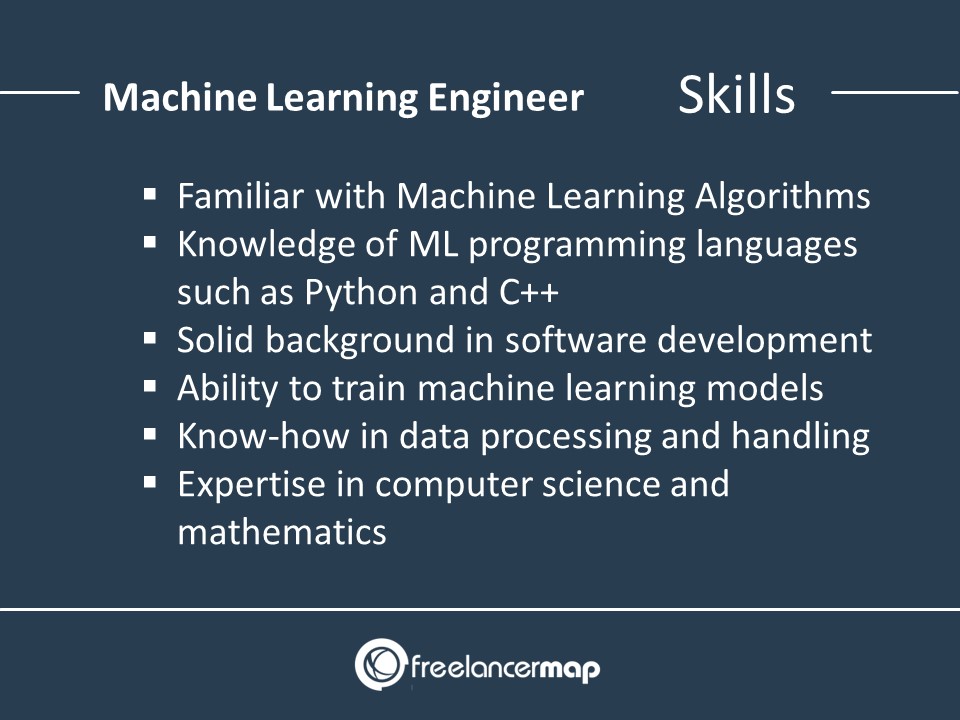All Categories
Featured
Table of Contents
- – Not known Details About Interview Kickstart La...
- – Everything about 7 Best Machine Learning Cours...
- – Getting My Llms And Machine Learning For Soft...
- – How Machine Learning can Save You Time, Stres...
- – Excitement About Machine Learning Developer
- – Why I Took A Machine Learning Course As A So...
You probably understand Santiago from his Twitter. On Twitter, daily, he shares a great deal of functional points regarding device discovering. Thanks, Santiago, for joining us today. Welcome. (2:39) Santiago: Thank you for inviting me. (3:16) Alexey: Prior to we go right into our primary subject of moving from software application engineering to artificial intelligence, maybe we can start with your history.
I began as a software program programmer. I went to college, obtained a computer science degree, and I started constructing software. I think it was 2015 when I made a decision to go with a Master's in computer technology. Back after that, I had no concept concerning artificial intelligence. I really did not have any type of interest in it.
I know you've been making use of the term "transitioning from software engineering to equipment knowing". I like the term "contributing to my capability the machine knowing skills" more due to the fact that I believe if you're a software program designer, you are already offering a great deal of value. By integrating artificial intelligence now, you're enhancing the effect that you can have on the industry.
Alexey: This comes back to one of your tweets or perhaps it was from your program when you compare two approaches to knowing. In this case, it was some problem from Kaggle about this Titanic dataset, and you simply find out how to solve this problem making use of a details tool, like decision trees from SciKit Learn.
Not known Details About Interview Kickstart Launches Best New Ml Engineer Course
You first learn mathematics, or straight algebra, calculus. After that when you know the mathematics, you most likely to device discovering theory and you learn the concept. 4 years later on, you finally come to applications, "Okay, how do I make use of all these 4 years of math to fix this Titanic trouble?" ? So in the previous, you kind of save yourself a long time, I think.
If I have an electric outlet right here that I need changing, I do not intend to go to college, invest 4 years understanding the math behind electrical energy and the physics and all of that, simply to transform an outlet. I would instead begin with the outlet and discover a YouTube video that aids me undergo the problem.
Poor example. But you get the concept, right? (27:22) Santiago: I really like the concept of starting with an issue, trying to throw away what I recognize as much as that issue and understand why it does not function. Get hold of the devices that I require to resolve that issue and start excavating deeper and much deeper and much deeper from that point on.
Alexey: Perhaps we can chat a bit concerning learning resources. You discussed in Kaggle there is an intro tutorial, where you can obtain and find out how to make decision trees.
The only need for that course is that you know a little bit of Python. If you go to my profile, the tweet that's going to be on the top, the one that claims "pinned tweet".
Everything about 7 Best Machine Learning Courses For 2025 (Read This First)

Even if you're not a developer, you can start with Python and function your way to more machine learning. This roadmap is focused on Coursera, which is a platform that I truly, actually like. You can investigate every one of the programs totally free or you can pay for the Coursera subscription to get certificates if you intend to.
So that's what I would certainly do. Alexey: This comes back to one of your tweets or possibly it was from your program when you contrast two techniques to learning. One method is the problem based technique, which you simply talked about. You find a trouble. In this case, it was some issue from Kaggle about this Titanic dataset, and you simply learn exactly how to address this trouble using a certain device, like decision trees from SciKit Learn.

You first discover math, or straight algebra, calculus. After that when you understand the mathematics, you most likely to equipment knowing concept and you find out the concept. After that four years later, you ultimately involve applications, "Okay, exactly how do I use all these four years of mathematics to fix this Titanic issue?" Right? So in the former, you sort of save yourself time, I believe.
If I have an electric outlet below that I need replacing, I don't intend to go to college, invest four years comprehending the math behind electricity and the physics and all of that, simply to alter an outlet. I prefer to start with the outlet and discover a YouTube video that helps me go via the trouble.
Negative analogy. You get the idea? (27:22) Santiago: I really like the concept of starting with a problem, attempting to toss out what I recognize up to that problem and understand why it does not function. Then grab the tools that I need to solve that problem and begin digging much deeper and deeper and much deeper from that factor on.
That's what I generally suggest. Alexey: Possibly we can talk a bit concerning finding out resources. You discussed in Kaggle there is an introduction tutorial, where you can obtain and find out exactly how to make choice trees. At the start, prior to we began this meeting, you stated a pair of books as well.
Getting My Llms And Machine Learning For Software Engineers To Work
The only demand for that training course is that you recognize a bit of Python. If you're a designer, that's a wonderful base. (38:48) Santiago: If you're not a developer, then I do have a pin on my Twitter account. If you most likely to my profile, the tweet that's going to get on the top, the one that claims "pinned tweet".
Also if you're not a developer, you can start with Python and function your way to more equipment understanding. This roadmap is concentrated on Coursera, which is a platform that I really, really like. You can examine every one of the programs for cost-free or you can pay for the Coursera registration to obtain certifications if you wish to.
How Machine Learning can Save You Time, Stress, and Money.
That's what I would do. Alexey: This comes back to one of your tweets or maybe it was from your course when you compare two methods to learning. One strategy is the trouble based technique, which you simply spoke about. You discover an issue. In this instance, it was some issue from Kaggle concerning this Titanic dataset, and you just discover just how to fix this problem utilizing a specific tool, like choice trees from SciKit Learn.

You first discover mathematics, or direct algebra, calculus. When you understand the math, you go to device understanding theory and you discover the concept. Then four years later on, you ultimately pertain to applications, "Okay, just how do I utilize all these 4 years of math to address this Titanic issue?" Right? In the former, you kind of save yourself some time, I believe.
If I have an electric outlet below that I need replacing, I don't intend to most likely to college, spend 4 years recognizing the mathematics behind power and the physics and all of that, simply to transform an electrical outlet. I would rather begin with the outlet and discover a YouTube video that assists me go through the problem.
Santiago: I truly like the idea of beginning with a trouble, attempting to toss out what I understand up to that trouble and comprehend why it does not work. Get hold of the tools that I need to resolve that trouble and start excavating much deeper and deeper and deeper from that point on.
To make sure that's what I generally recommend. Alexey: Perhaps we can talk a bit about discovering resources. You mentioned in Kaggle there is an intro tutorial, where you can obtain and discover just how to choose trees. At the beginning, before we began this interview, you pointed out a couple of books.
Excitement About Machine Learning Developer
The only requirement for that course is that you understand a little bit of Python. If you go to my profile, the tweet that's going to be on the top, the one that says "pinned tweet".
Also if you're not a programmer, you can start with Python and function your method to more artificial intelligence. This roadmap is focused on Coursera, which is a system that I truly, really like. You can examine every one of the courses completely free or you can pay for the Coursera subscription to obtain certifications if you wish to.
Alexey: This comes back to one of your tweets or possibly it was from your course when you contrast 2 strategies to discovering. In this case, it was some problem from Kaggle concerning this Titanic dataset, and you just learn just how to resolve this issue utilizing a details tool, like decision trees from SciKit Learn.
You first learn math, or direct algebra, calculus. When you understand the mathematics, you go to device knowing concept and you find out the theory.
Why I Took A Machine Learning Course As A Software Engineer Fundamentals Explained
If I have an electric outlet here that I require replacing, I don't want to most likely to university, spend 4 years recognizing the mathematics behind electrical power and the physics and all of that, simply to transform an outlet. I prefer to start with the outlet and locate a YouTube video clip that assists me experience the issue.
Bad example. You get the concept? (27:22) Santiago: I actually like the idea of starting with a problem, trying to toss out what I recognize approximately that problem and understand why it doesn't work. Then get hold of the devices that I require to resolve that issue and start digging deeper and deeper and deeper from that point on.

Alexey: Possibly we can chat a little bit concerning finding out sources. You mentioned in Kaggle there is an intro tutorial, where you can get and find out how to make choice trees.
The only requirement for that course is that you understand a little bit of Python. If you're a designer, that's a terrific base. (38:48) Santiago: If you're not a designer, then I do have a pin on my Twitter account. If you go to my profile, the tweet that's going to get on the top, the one that claims "pinned tweet".
Even if you're not a developer, you can start with Python and function your means to even more maker learning. This roadmap is focused on Coursera, which is a system that I actually, really like. You can investigate all of the programs completely free or you can pay for the Coursera subscription to obtain certifications if you desire to.
Table of Contents
- – Not known Details About Interview Kickstart La...
- – Everything about 7 Best Machine Learning Cours...
- – Getting My Llms And Machine Learning For Soft...
- – How Machine Learning can Save You Time, Stres...
- – Excitement About Machine Learning Developer
- – Why I Took A Machine Learning Course As A So...
Latest Posts
Amazon Software Developer Interview – Most Common Questions
Free Data Science & Machine Learning Interview Preparation Courses
What’s The Faang Hiring Process Like In 2025?
More
Latest Posts
Amazon Software Developer Interview – Most Common Questions
Free Data Science & Machine Learning Interview Preparation Courses
What’s The Faang Hiring Process Like In 2025?